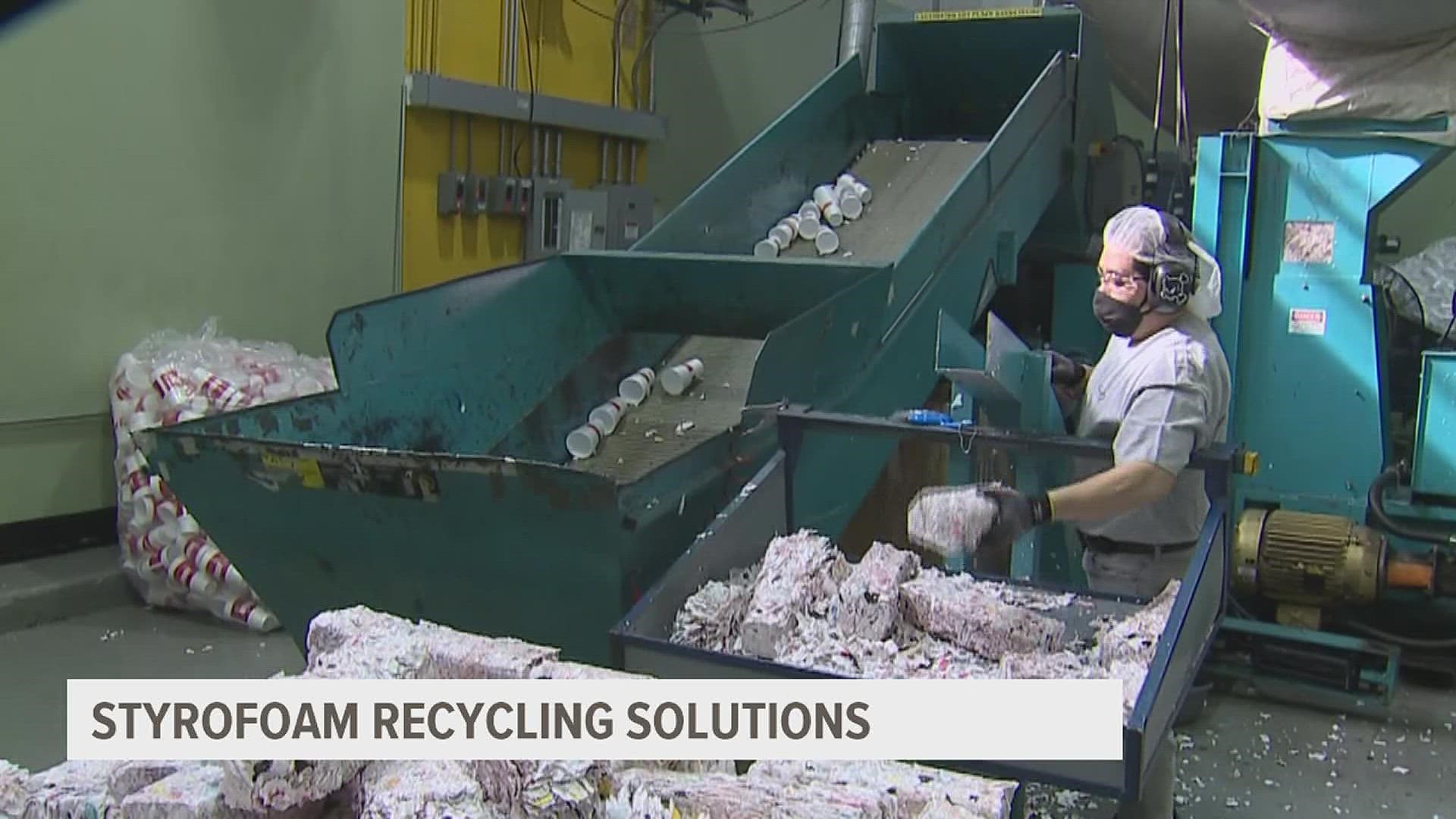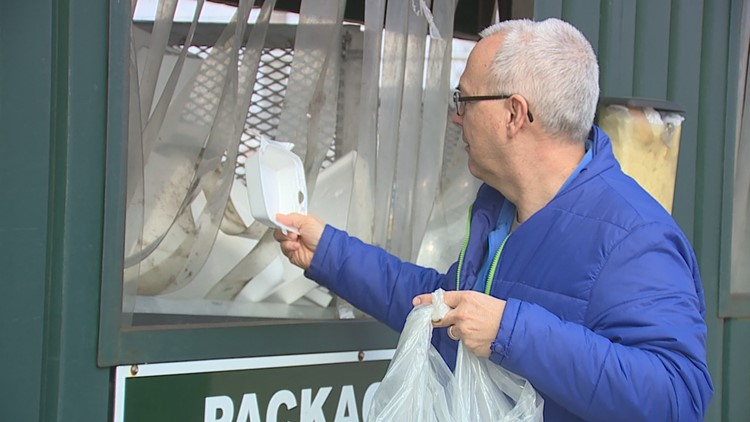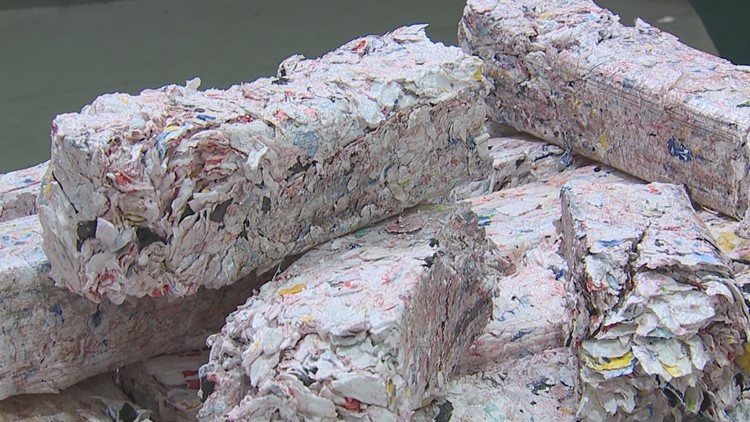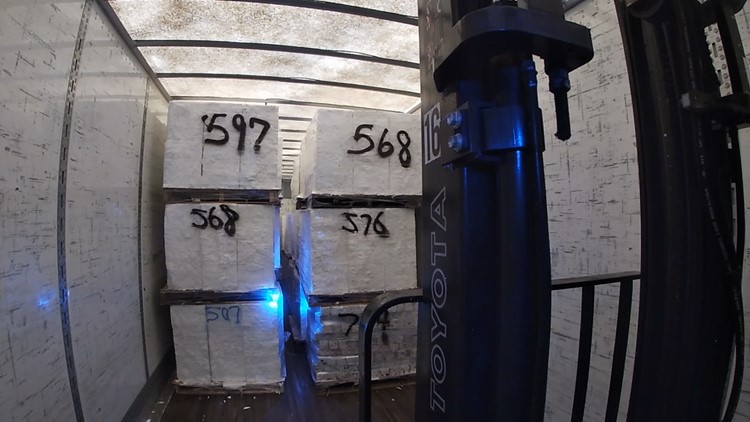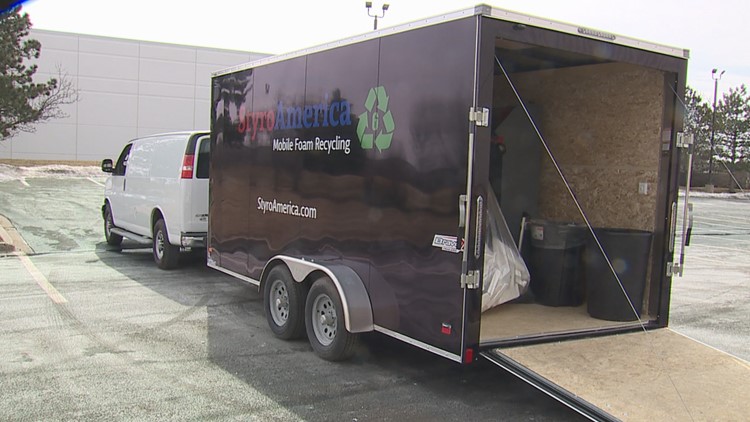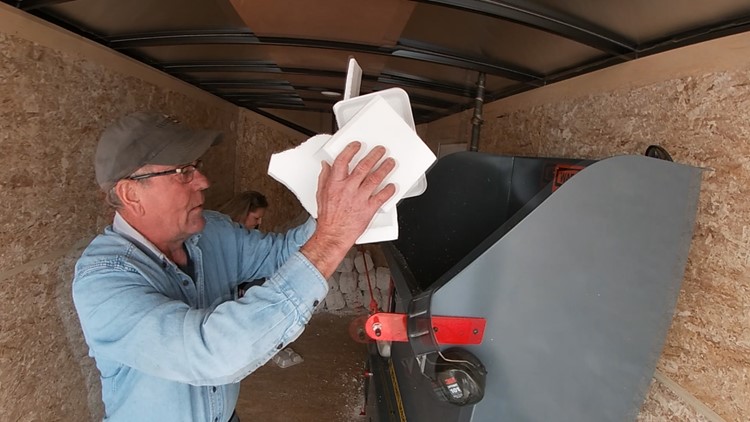DAVENPORT, Iowa — Hundreds of thousands of expanded polystyrene foam products, more commonly known as Styrofoam, are manufactured each year in the U.S. It's used to make takeout containers, disposable coffee cups and protective padding in packages.
Many Styrofoam products, specifically No. 6 foam, have the recycling symbol on them, but unfortunately, recycling them isn't as easy as throwing them into the nearest blue bin.
Less than 4% of Styrofoam gets recycled each year in the U.S., according to the Environmental Protection Agency. The majority of it will end up in landfills, and it's estimated it will stay there for the next 500 or more years.
This means it's just sitting there taking up space in landfills, becoming a waste management concern. Because it is essentially non-biodegradable waste, it can also leach chemicals into the surrounding environment. Additionally, because it does not biodegrade, Styrofoam just fractures into smaller and smaller bits called "microplastics." Those bits can end up in the ocean, where they'll also persist for virtually forever. Animals can also mistake it for food.
There are no options to recycle it in the Quad Cities. The Waste Commission of Scott County is unable to accept it at its recycling center.
"It breaks apart and then it sticks to paper. It sticks to other types of plastic," Communications Manager Megan Fox said. "It makes that paper or the other type of plastic no longer recyclable because it contaminates it."
She added that they do see a lot of Styrofoam get dropped off at the recycling center, especially around the holidays. Workers then have to pick it out on the conveyor belt so it doesn't cause that contamination.
One of the reasons Scott County doesn't recycle it, Fox said, is because it doesn't have the machinery that's needed to be able to break it down and densify it. There are no plans to start recycling it either.
"It's a different type of equipment that you would need, and the investment would be really high in order to recycle that material," Fox said. "We're just a sorting facility. So we get all the recycling, we sort it into different contaminants or different types of material and then we sell it to the recycler. It would be up to the recycler if they were going to invest in that equipment."
Styrofoam is 95% air, so it takes up a lot of space in the recycling bins but doesn't weigh a lot. Recyclers have to be able to sell the material by weight, so they'd have to process a lot of it to make a profit.
"The economic benefit, it actually costs more to recycle it than what you would get out of selling that product," Fox said.
Two companies in the Chicago area have invested in the densifying equipment.
One of those companies is the Dart Container Corporation facility in North Aurora. Dart manufactures food-service products but also has a drop-off Styrofoam recycling site.
Libby Rice, the company's senior social responsibility and sustainability specialist, said Dart is the only one in its industry to offer this service.
"It's not that hard to collect it and find a home for it," Rice said. "People just have to be willing to do it."
And people have been willing to do it. The bins outside get completely filled and switched out multiple times a day. Over the last decade, Rice estimates that Dart has recycled around 15 million pounds of Styrofoam.
"It's recapturing all of that usable product from going to the landfill," Rice said. "Landfill diversion is a huge focus of all environmental groups. And this is one piece of the puzzle to that."
Tim and Marie Higgins live in the area and collect Styrofoam from friends and family, keeping it in a bag in their garage and visiting Dart every six weeks.
"I think this makes a lot of sense for it to be recycled and then back into products that can be used again," Marie said.
The Higgins even collect Styrofoam from their extended family who live in Port Byron, Illinois, because it can't be recycled anywhere nearby.
"Every time we go visit, they usually say pick up the recycling out of the garage and take it with you," Marie said.
About 20 large bags of Styrofoam go through the densification machine each day.
"Basically, it's grinding it up into smaller pieces and then compacting them," Rice said. "So they're in bricks, those bricks are palletized, the pallets of product are shipped to another recycling facility."
PHOTOS: 2 companies working to increase amount of Styrofoam recycled in US
Each pallet can weigh up to 700 pounds. Semitrucks are filled with pallets and shipped out two to three times a week, Plant Manager Keith Johnson said.
"It really is shocking," Johnson said. "I think people don't really understand how much is really out there."
The other recycling facility melts the densified Styrofoam down and uses it to make picture frames, office equipment and molding, among other products. A six-inch ruler is made using the weight of about two and a half 8-ounce foam cups.
"It's getting turned into this, which is kind of amazing," Dart employee Michael McCall said.
You just might not be able to make those products white, Rice said.
"When you are manufacturing a product that is white, you can't use black foam recycled content. It's very dirty, it appears brown and gray," she explained. "The aftermarket needs to be specific to somebody who can colorize it, can make it darker. But if you want a light color, recycled content doesn't necessarily work."
Rice added it's all about learning how to be an efficient recycler to tackle the economic reason many places don't want to recycle Styrofoam. That densifier helps Dart to be an efficient recycler.
"Because everything is sold by the weight, so it's how you process that material efficiently to get the most weight to sell," Rice said. "Recycling is only successful when the public has access and when there's a healthy market. Access is the first key."
Access to Styrofoam recycling is the challenge G2 Revolution, a specialty recycling company in Lake Zurich, is trying to tackle.
"There wasn't a really good solution out there where people could have access to recycling," G2 President Scott DeMuth said. "And that's really the key issue is access to the recycling. It can be recycled, but it's getting to the recycling."
G2 Revolution is launching a mobile foam recycling unit this year. It's the same type of densifying technology that Dart uses just on a smaller scale. DeMuth said they only have one unit right now but are working to manufacture more.
"The hope is that ultimately, we get on to a site, we're there for an hour, maybe two hours at most, run the materials through the machine, and then we're off-site," he said.
They're also working to determine where those sites might be and how often the mobile unit will go out into the community, but DeMuth said there's been a lot of interest so far.
"We've had requests from commercial customers that have big amounts of foam materials, as well as municipal customers and counties that operate landfills, and they get the Styrofoam as part of their community collection events," DeMuth said.
Like Dart, G2 Revolution will sell the condensed material to another recycler who will turn it into different products.
"Styrofoam is a very useful material. It's light. It can hold its structure, and so, it has a lot of good qualities to it," DeMuth said. "Unfortunately, sometimes that works against it in terms of trying to recycle that. And ultimately, the hope is that we can create a very robust recycling process that allows it to continue to be used as a good material going forward."
Because of the environmental impact of Styrofoam in landfills, several states and cities have made efforts to ban it.
DeMuth pointed out that at one point, the recycling of all products - including plastic - was a challenge, but recycling is all about innovation.
"It's just a matter of trying to figure out then logistically how to make this get implemented going forward," he said.
Because Styrofoam cannot currently be recycled in the Quad Cities, Fox recommends that you reuse it if you can.

